It was an unlikely alliance: Chieftainess Shikabeta, who ruled over the kingdom of Shikabeta, and Roland Norton, who operated a safari business.
But they found common ground in opposing poaching in the African region and trying to help guide the indigenous people to healthier, more productive lives.
A documentary, “Killing the Shepherd” tells the story of this unique partnership while depicting the harsh realities of life in Zambia, how modern wildlife policies impact both human beings and wildlife, and the need for conservation in Africa.
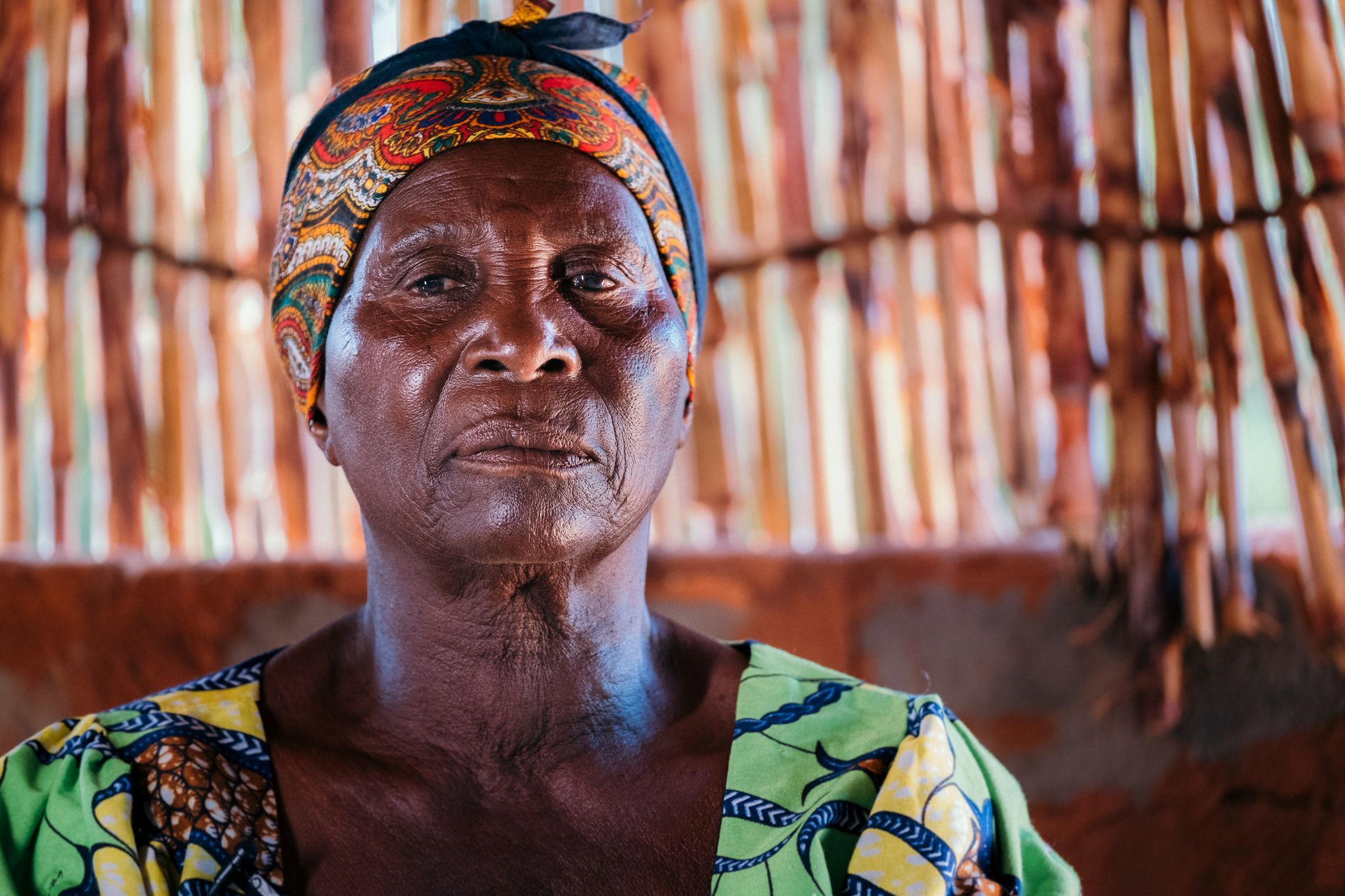
Chieftainess Shikabeta. Photo courtesy Tony Bynum Photography
“Killing the Shepherd” was shown at 39 film festivals, claiming 20 awards, some for covering and reporting on indigenous/human rights. The film makes the point that the ingredients for survival in rural African communities isn’t to simply stop hunger or end illegal poaching, but to find a new balance between humans and animals.
“Killing the Shepherd” was produced by the Shepherds of Wildlife Society, which was founded to reconnect society with nature by developing educational and motivational materials that support habitat sustainability and management of wildlife. Their mission is to preserve and protect wildlife and its habitat for generations to come.
Tom “T.A.” Opre, the founder and CEO of Shepherds of Wildlife Society, made his debut as a feature documentary director with “Killing the Shepherd.”
Opre, who lives in Montana’s Flathead Valley, has worked as a film director, cinematographer, television producer, and wildlife conservationist. He has enjoyed a successful career producing and/or directing national television commercial projects for Fortune 500 companies, corporate video and episodic television. He produced the acclaimed series “Eye of the Hunter” for NBC, completing a seven-year run in 2015.
Opre, whose father Tom E. Opre was outdoors editor of the Detroit Free Press for nearly 30 years and also wrote for Fish and Stream, grew up hunting, fishing and spending a great deal of time outside. He is the past president of the Professional Outdoor Media Association, where he worked to help other outdoor communicators and industry leaders understand and present a unified message regarding the top issues facing wildlife conservation today. He also serves on the African Children’s Schools board.
Opre learned of the many problems of the Soli people almost by accident while speaking at a conference in Atlanta.
“In 2016, I was asked to present to a large group of international wildlife groups and sportsmen. The conference was called Crucial to Conservation. My presentation was on the perception of hunting by the non-hunting public.
“Our modern wildlife conservation ethos was established at the turn of the 20th century by men like President Theodore Roosevelt, George Bird Grinnell, Gifford Pinchot, Aldo Leopold and others. They spearheaded the resurgence of wildlife populations and established public lands to protect wildlife habitat after European colonization of North America had almost stripped the land of these resources. These men all had one thing in common — they were hunters.
“But over the last 100-plus years, much has changed in our society. By and large, hunters are not well thought of due to a major disconnect between human society and nature. Throw around the words like trophy or safari among non-hunters in the United States and you’ll get a 90% negative reaction. In the minds of the public, hunters have lost the mantle of wildlife conservation.”
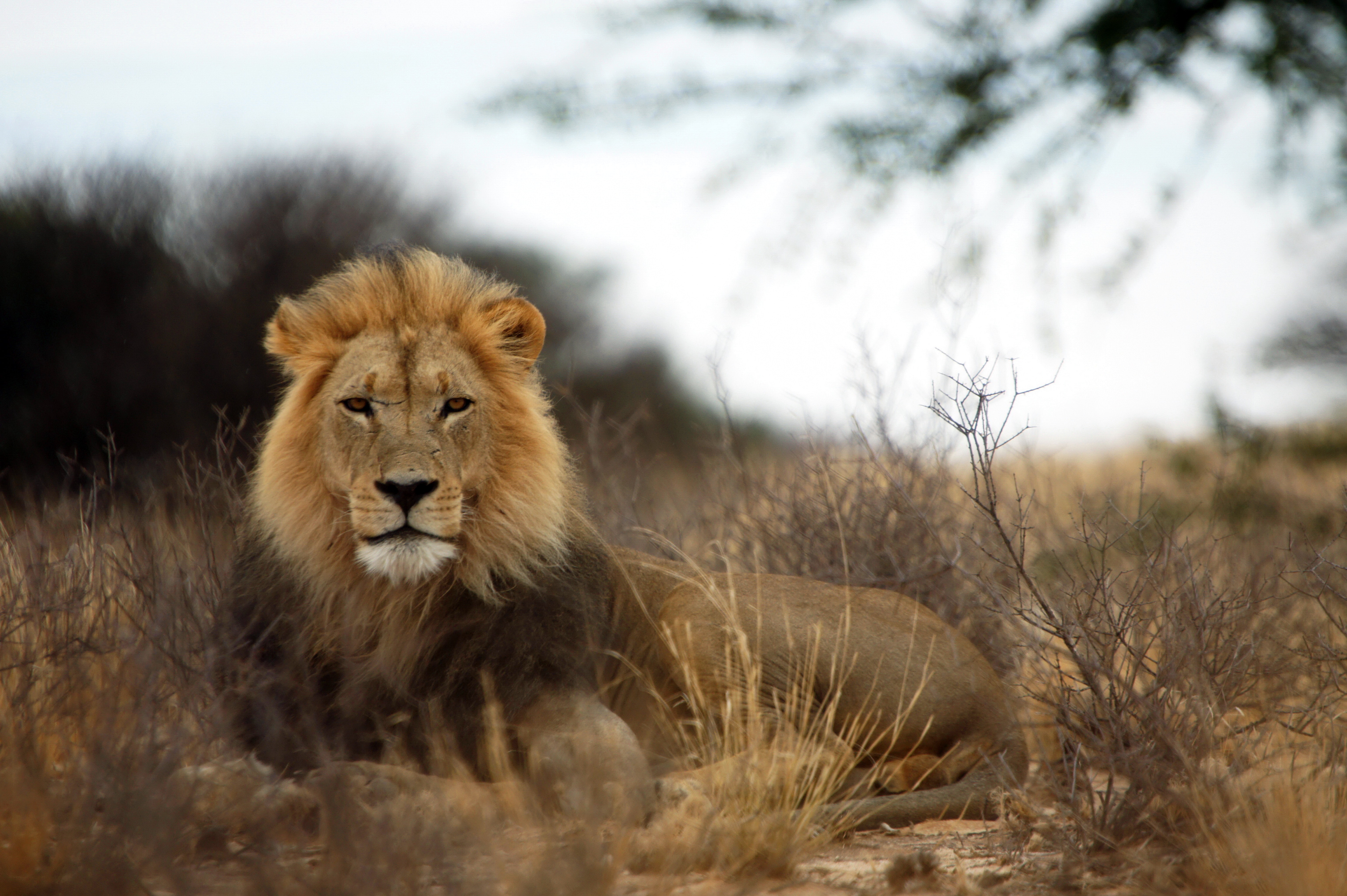 Lions are a popular animal among trophy hunters. Photo by Ansie Potgieter | Unsplash
Lions are a popular animal among trophy hunters. Photo by Ansie Potgieter | Unsplash
At the end of the presentation, a man named Roland Norton, the chairman of the Professional Hunter & Guides Association of Zambia, introduced himself to Opre.
“As we talked, he told me a crazy story about a woman chief who had knocked on his door one day. Women chiefs are not common in Africa,” he told Kinute. “Roland ran an import/export business facilitating the mining industry of Zambia. For most of his adult life, his side hustle was taking folks hunting as a freelance professional hunter. Chief Shikabeta ruled the Lower Luano Valley, a game management area the size of Delaware. Her people were dying of hunger and disease. There were no jobs. Young girls were married off as child brides because the family could see a little bit of money to buy food.”
Chieftainess Shikabeta told Norton she heard he was an honest man, someone she could trust.
“She wanted him to come and help her community. No one from the U.N., NGOs, or government was on the scene. There was no one willing to help,” Opre said. “Through subsistence and bushmeat poaching, wildlife stocks had been depleted to the point of local species extinction. It was so bad no legal hunting quota had been allocated to the area in two decades. (Chieftainess) Shikabeta felt she needed a hunting operator to come and help her people. It was the only viable business that could operate in the Lower Luano.”
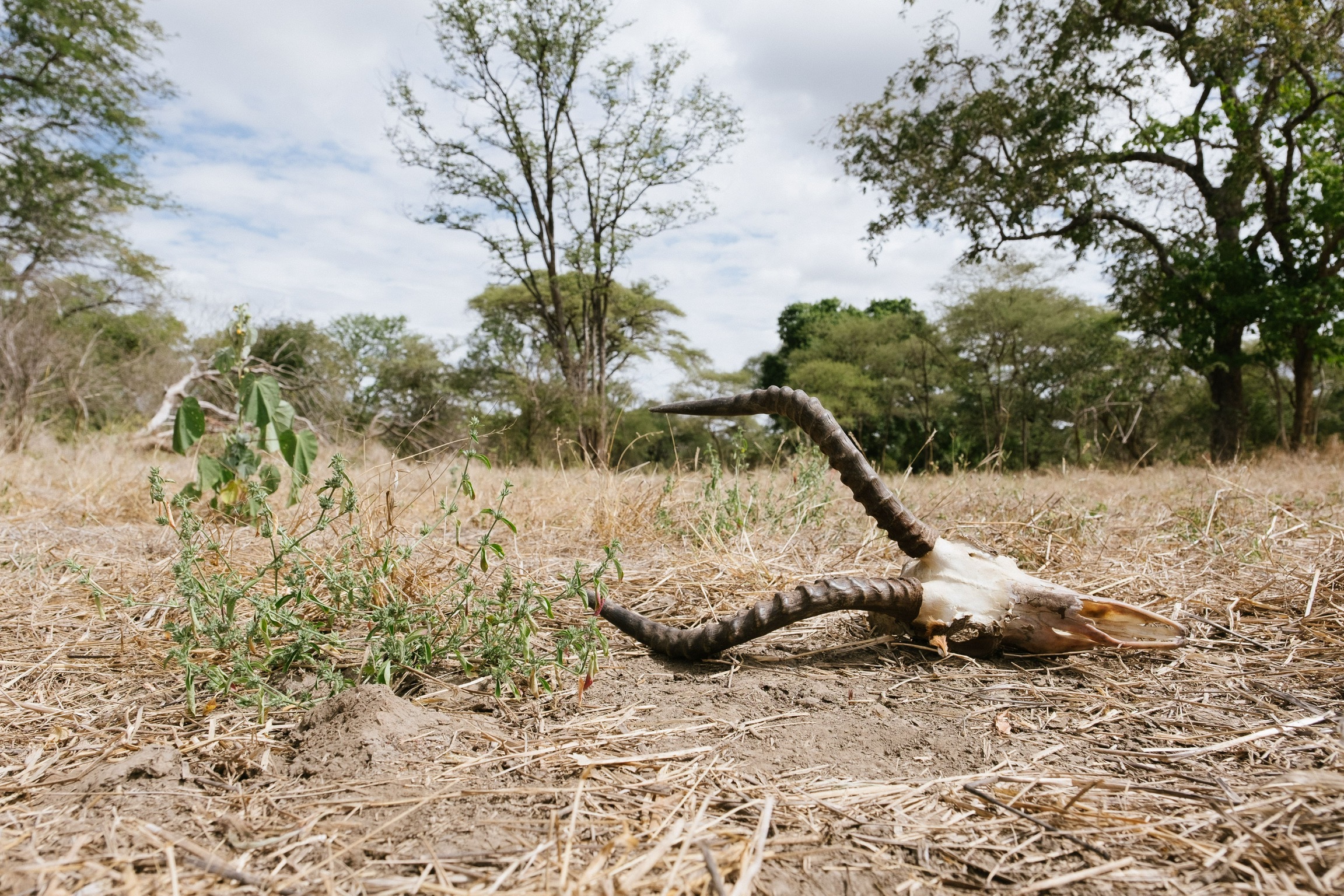
An impala skull. It may have been taken by poachers or hunted by locals. Photo courtesy Tony Bynum Photography
Norton, who worked with his son Alister, had hunted the area back in 1989 when it was known as one of the best safari hunting areas in the country, he told Opre. Large animals on the landscape included Africa’s Big Five — rhino, elephant, lion, leopard and cape buffalo.
“The next day, while waiting for our respective flights home, Roland and I sat in an airport lounge. I took notes for four hours about how the Nortons were helping the community stand on its own,” he said. “He opened up about every detail. We discussed how much money they had spent, their commitment to community development projects and his dream to restore an area man had destroyed.”
Opre decided to focus on this issue, in both senses. He said after doing primarily commercial work, making “millions and millions of dollars” for his clients, he has decided to try to make a difference in the world, helping people reconnect with the natural world. “Killing the Shepherd” came from that mindset. He has been to Africa many times over the last quarter-century, but returned with a clear mission in mind this time.
“In the spring of 2017, photographer Tony Bynum and I jumped on a plane to Zambia. My goal was to check on the reality of the story,” he said. “After a dozen days of shooting pictures and recording videos, I knew there was a potential film. Over the next three and a half years, I spent nearly 120 days in the country. I documented everything I could,” Opre said. “It was a story of the community and how Roland, Alister and their families had helped these folks up the first couple of rungs of the ladder of prosperity.”
The Nortons still and work in Africa. Chieftainess Shikabeta, who was poisoned under still-unexplained circumstances, Opre said, died on April 11, 2020. While their partnership came to an end, “Killing the Shepherd” recorded its impact for eternity.
“There are many incredible nature documentaries produced each year, but most omit the 10,000-pound gorilla in the room — humans. We have an impact over every square inch of this Earth,” he said. “The film I produced was not about wildlife or ecosystems. It was not about wildlife conservation or hunting. ‘Killing the Shepherd’ is about people and their fight to survive on the landscape. People in the Western world don’t understand.

An impala is captured for the movie. Photo courtesy Tony Bynum Photography
“These rural communities live in unbelievable poverty. They are subsistence farmers eking out a living on sub-par soils,” Opre said. “They attempt to grow maize (corn) in an area with unreliable rainfall. Maize needs a lot of water. As well, you have a high population of baboons raiding crops. We like corn. Makes sense, so do monkeys.
“Also competing against the farmers are army ants, drought and severe temperatures. Add to this equation serious human issues like HIV, alcoholism, the Tsetse fly transmitting sleeping sickness, and the lack of any employment in the area make survival a challenge.”
The Lower Luano Valley was a miserable place when Opre first arrived in 2017, he said. Alcohol abuse was widespread, with some people having their first drink at 6 a.m. Families were crumbling, and work was scarce.
“In 1987, Zambia enacted a safari hunting ban because of corruption. Bans occurred again in 2001 and 2002. No safari operators were out on the land, working to protect the resources during the bans,” he said. “These hunting operators work with game scouts and the community to ensure no-poaching, illegal logging, or gold mining occurs. They don’t allow the land to be harmed because destroying the wildlife resources is the very essence of their business operations. If there are no animals, no hunters will come with their U.S. dollars or euros.”
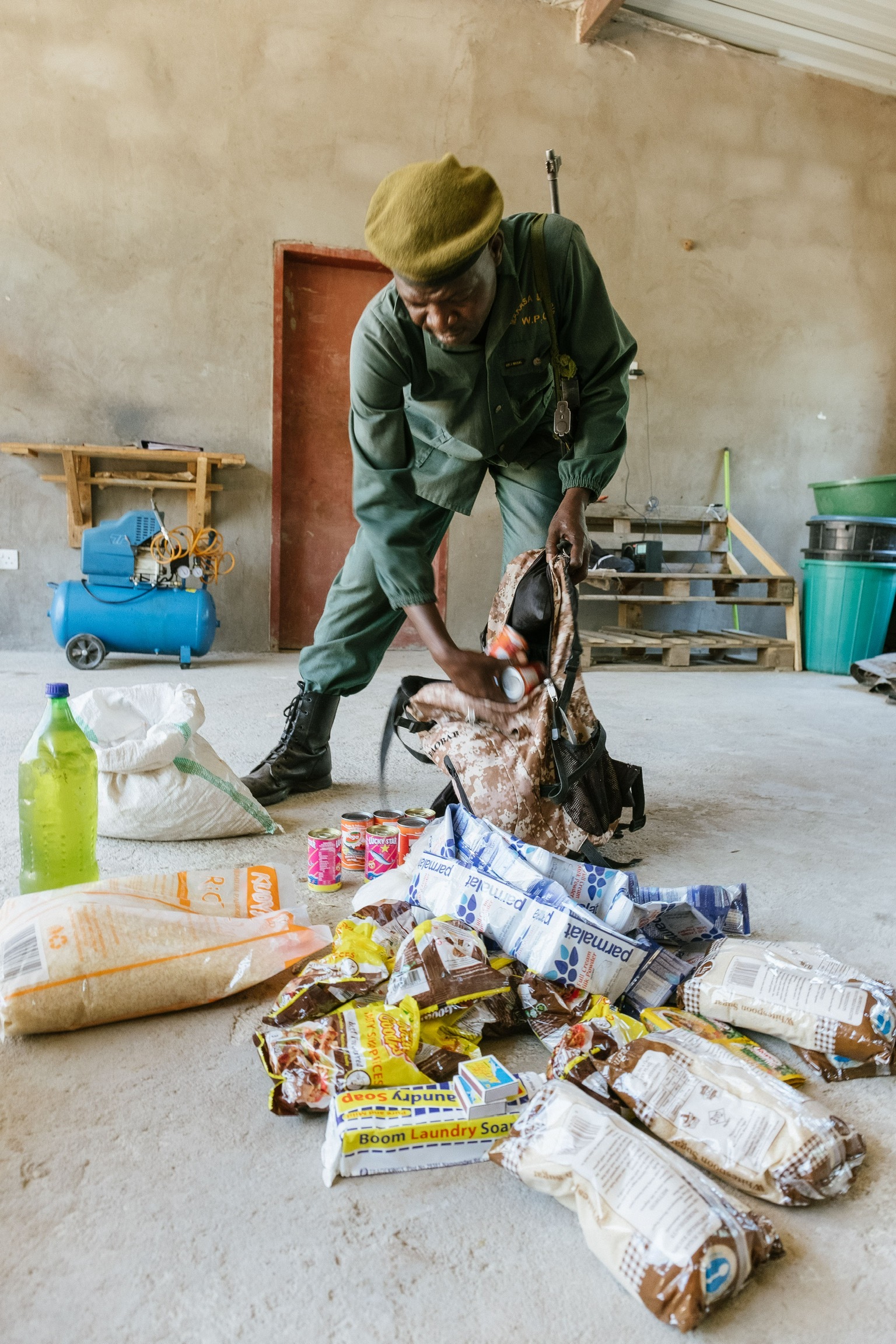
Godfrey, a game scout, checks his food supply as he prepares to head out. Photo courtesy Tony Bynum Photography
During these hunting bans, the poaching gangs moved into the Lower Luano Valley and built villages amid the best wildlife range. The people didn’t clear fields and plant crops. They were strictly poaching — killing and drying game. They ship meat back to the bushmeat markets in Lusaka, about six hours away by vehicle.
Bushmeat is a big deal in Africa. The UN estimates it to be a $2 billion annual black market.
“Throughout Africa, everyone loves bushmeat. Most think it’s a right to eat it,” Opre said. “The Lower Luano Valley saw some 20 years of unrestricted access by poachers to the wildlife resources. They killed everything. Much of it is run by highly militarized criminal gangs. I would liken it to the drug cartels in Mexico. Not as much violence or killings, but they are dangerous.
“As I mentioned before, the people living in the Lower Luano Valley are subsistence farmers. Living in the valley is not easy. Areas that have robust wildlife populations often lead to human-wildlife conflict,” he said. “Wildlife love to eat the people’s crops. One farmer I interviewed, Dominic Tembo, flatly stated to me he produces one-third of his crop for his family, one-third crop for animals and insects, and one-third of his crop just withers away from the hot sun. His crop is not large.”
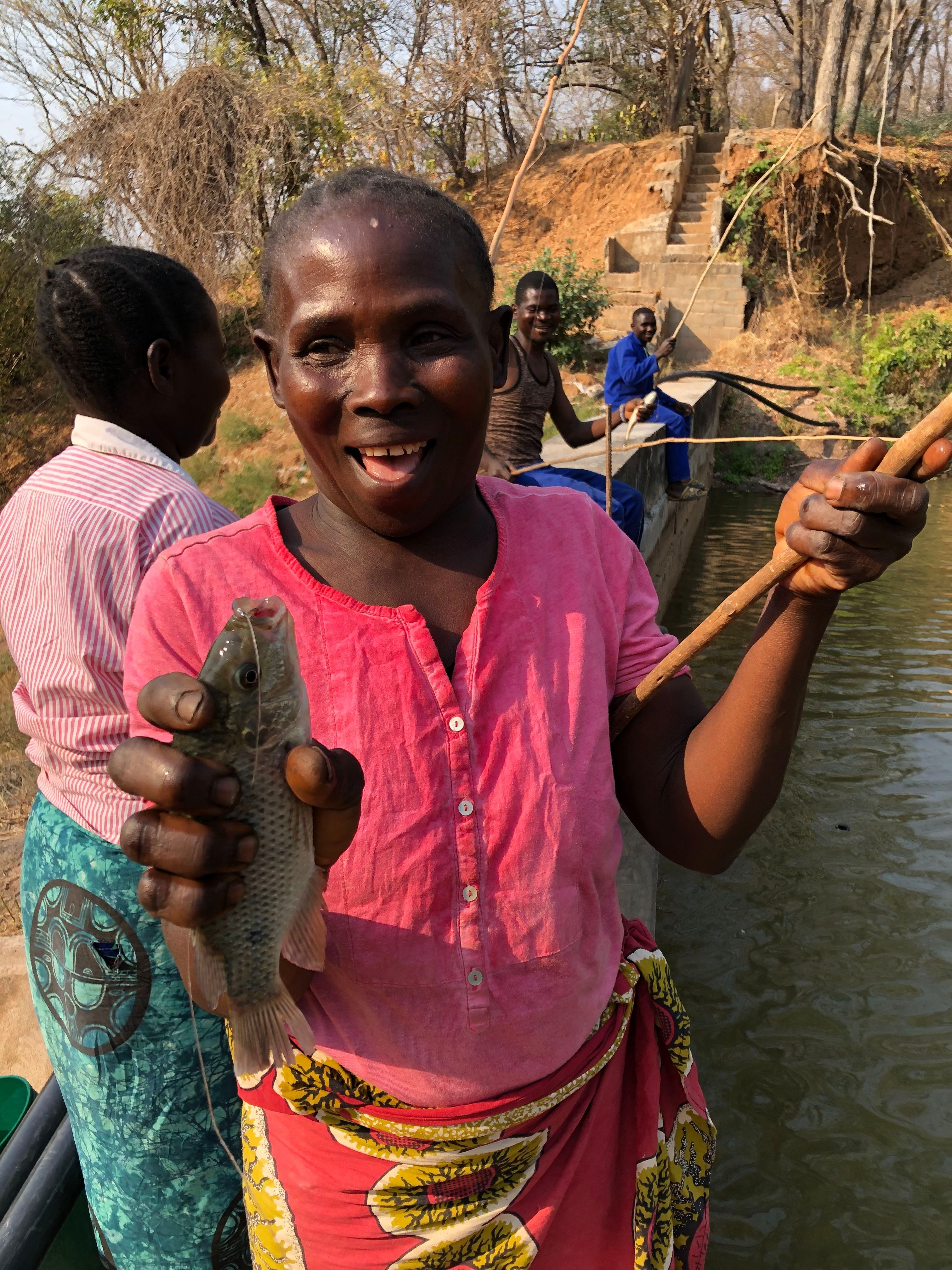
Teaching locals to fish using cane poles is a way to reduce food insecurity. Photo courtesy Tony Bynum Photography
In addition to a food shortage, disease is a major concern.
The Lower Luano Valley is filled with Tsetse flies carrying sleeping sickness. Domestic animals can’t survive in the valley. It causes organ failure in humans if not treated in the early stages. Malaria and HIV are prevalent in the community, too.
Add in rampant alcoholism and it seemed almost hopeless.
“But what everyone in the western world needs to understand is if the local community doesn’t see a value or benefit from their wildlife then the wildlife will go the way of the Dodo bird — it will be gone,” Opre said. “Unless you’ve spent time on the ground with these communities in remote Africa you really don’t understand the complexities of wildlife conservation. Africans don’t glorify their wildlife like westerners. In all of Africa, wildlife has only one name — nyama. It means meat.”

Bushmeat is dried over fire. Photo courtesy Tony Bynum Photography
Child brides
Opre, the father of three daughters, two of whom are teenagers, said he was struck by the human suffering, especially the horrific lives of many girls.
“Child brides in this part of Africa are a problem. When interviewing one of the nurses at the Shikabeta clinic, she told stories of young girls dying because they were too young to be pregnant. Their bodies were not developed enough to handle pregnancy,” he said. “On my first trip to the Lower Luano, I met Neliya Zulu and her infant son. I had been told she was only 13 or 14 years old. When I asked her about her age she told me she was born in the year 2000. She was not 17. Not even close.
“The government runs a child bride awareness campaign through the medical clinics. The nurses informed me they provide free health care including pregnancy services. But they are required to report any young pregnant girls,” Opre said. “It was obvious Ms. Zulu was concerned with my questions. In 2019, I requested a formal video interview with her. We met at her village. I could see she didn’t have much in the way of resources (pots, pans, etc.). I could also see a new tummy bulge. She was pregnant. She held her son for part of the interview. He couldn't have been more than a year and a half old. He cried and cried.
“It was obvious neither he nor his mother was happy. The father, around 30 years of age, came and took the boy so we could continue the interview,” he said. “Ms. Zulu was shy. But eventually, she told us of the problems they experience trying to survive. She didn’t want to be a mother. She had never attended school. There was no hope for her.
"I could only think of my own girls sitting in front of my camera telling me this story. You couldn’t help but feel a terrible drag on your soul.”
Between May 2017 and September 2020 Opre spent about 120 days in country filming “Killing the Shepherd.” The average shoot was about 10 days. Photographer Tony Bynum made two trips to the region.
“Funny enough, at several film festival screenings I’ve had other filmmakers ask me the size of our production crew. I just laugh,” Opre said. “I was the producer, director, cameraman, drone operator and handled all the time-lapse photography. But I did teach one of the game scouts named Bright how to hold my flex-fill reflector for interviews. For a film like this, it’s imperative you create trust to keep your subjects comfortable around the camera. By the time we wrapped camera most of my subjects thought camera work was old hat.
“I was humbled as to the power my cameras can have on the ground,” he said. “After my first trip, I showed the footage of school kids in open-air classrooms to Dr. Peter Nalos of African Children’s Schools.”
African Children’s Schools, founded by safari hunters, has built over 60 schools in remote parts of Africa including Ethiopia, Uganda, Tanzania, and South Africa. The Nortons had committed to building proper schools for the community.
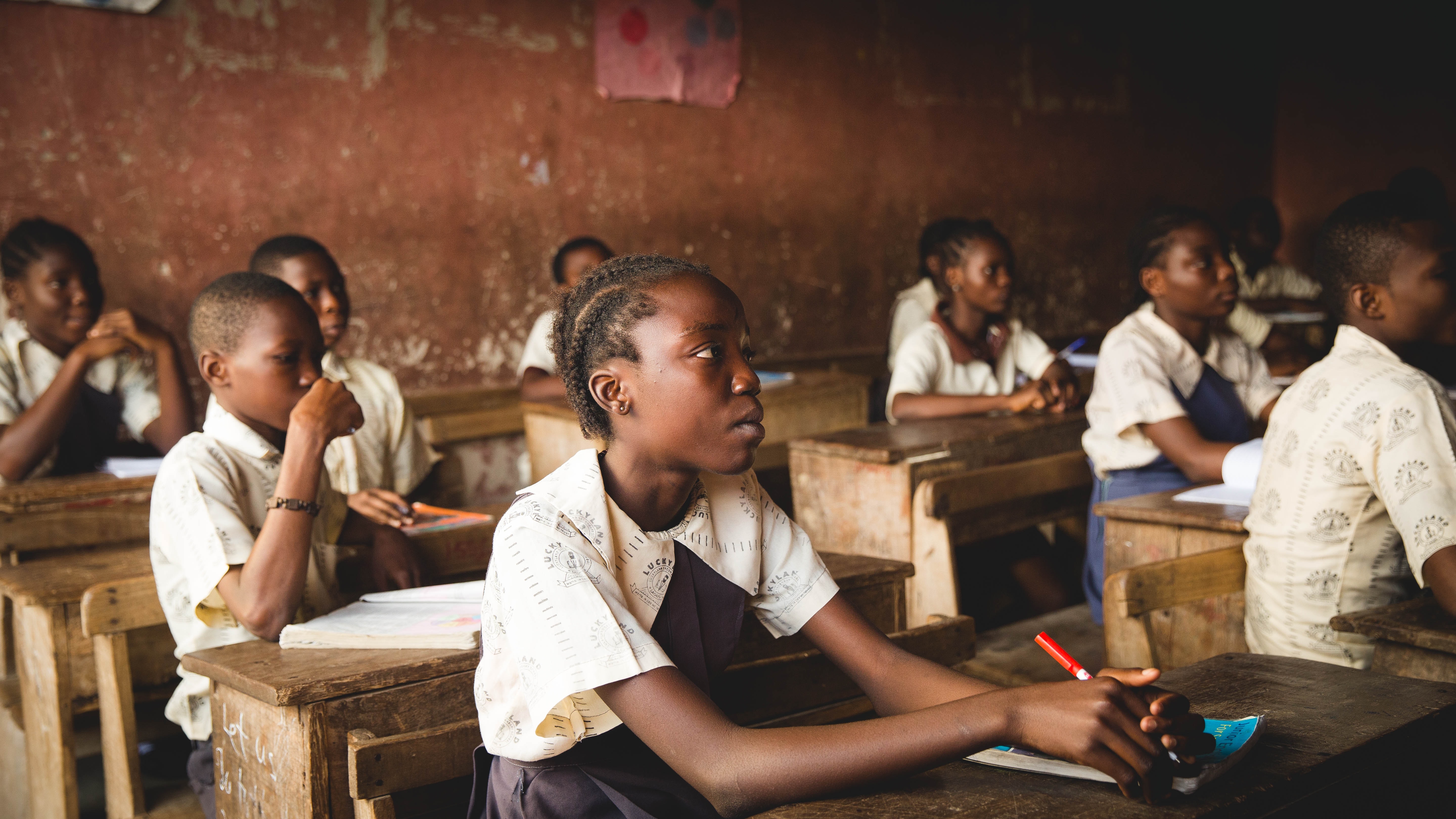
Building schools for children is key to ending illiteracy in rural Africa. Photo by Doug Linstedt | Unsplash
“The next day Dr. Nalos and I were on a WhatsApp call with Roland discussing the funding of new schools,” Opre said. “Within the week 50% of the funds necessary to build two new schools was wired to Zambia. Since then ACS has helped fund five classroom blocks in three schools, plus providing school uniforms, desks, school supplies, and the salaries of the teachers.
“With the influx of funds, I negotiated with Roland to repurpose the money he had budgeted for these community developments into dollars for anti-poaching efforts. Not only would the community benefit, but so would the wildlife.”
Opre is deeply experienced in researching and documenting multiple cultures. This time, he took a hand to promote meaningful change.
“I’ve been blessed to be able to travel the world and witness many cultures. Back in 2017, it was rough for both the community and the wildlife,” he said. “It wasn’t fun seeing people grasping at the edges of existence. But over the three and half years I spent traveling back and forth to Zambia I witnessed positive change. Roland’s soft loan program (zero interest, short term) enabled women to start their own businesses. With money flowing into the community from the 100-plus people working for the fish farm, as game scouts, and construction workers small stores began to pop up in each village. This provides access to staple food items, clothing, and even cellular service cards.”
The original cut of the film was around three hours, Opre said, and when you film such complex subject matter with many moving parts you end up with a ton of footage. Some show unexpected but deeply moving events.
“I documented headman Peter Lyombo’s annual fish festival which occurred on an oxbow of the Lunsemfwa River not far from the Norton’s fish farm. Not only did I document the festival, but the family included me in the ceremony,” he said. “At one point we left the family graveyard after Peter had sung to his ancestors asking them to protect the people from crocodiles, to walk down to the edge of the water. Once there, Peter mixed up a bowl of millet flour with water. He then pasted all his family’s faces. He then came to me and painted my face. The mixture was grayish-white in color.
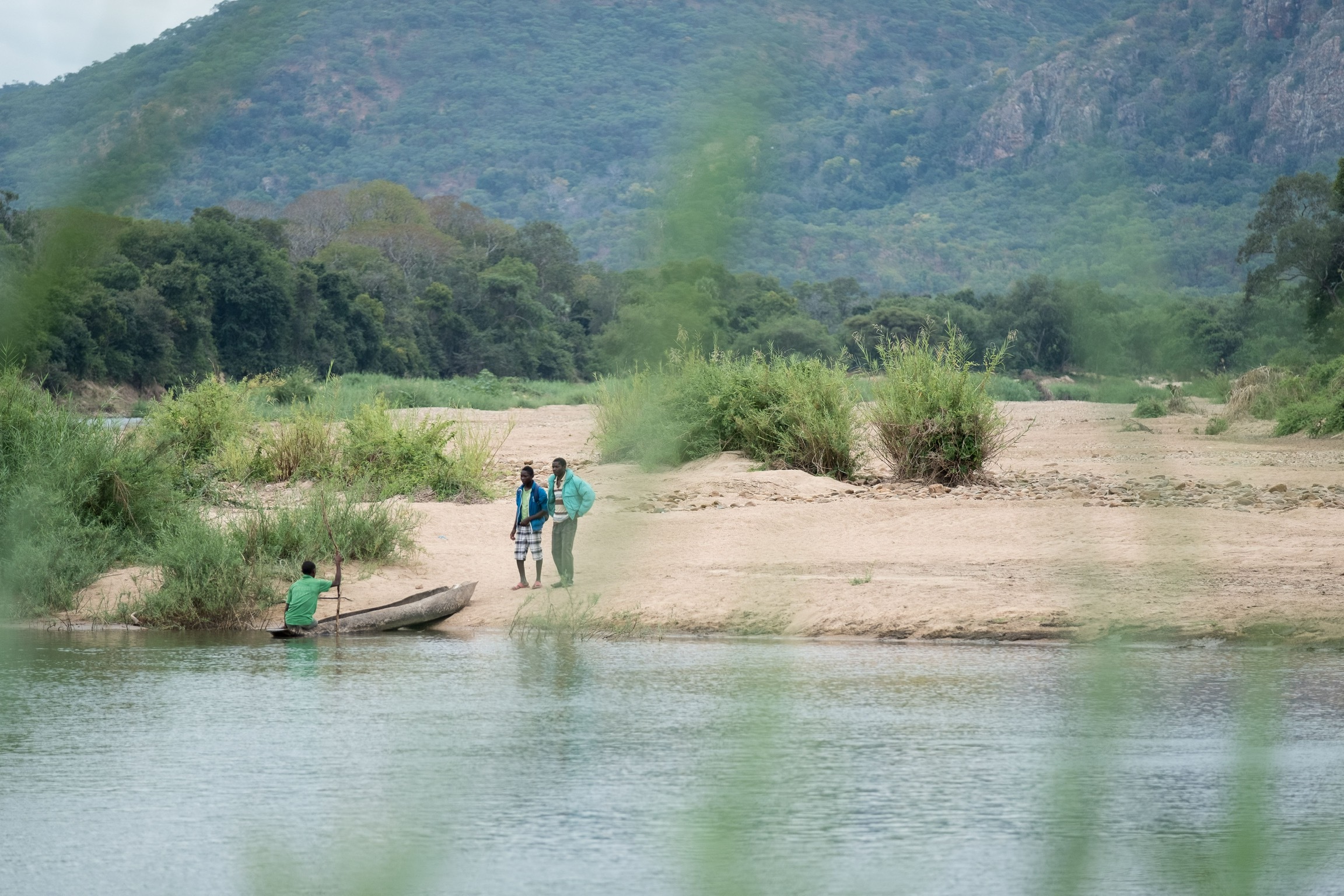
A scene from the confluence of the Lukusashi and Lunsemfwa rivers. The shallow dugout boats are used by locals. Photo courtesy Tom “T.A.” Opre
“I was told by painting our faces the evil spirits would not see us along the water. Because the evil spirits couldn’t see us the people in the water during the festival would be safe,” Opre said. “Once everyone had a painted face he passed around the bowl filled with remaining millet. Everyone dipped their fingers into the porridge-like concoction and plopped a small ball into my mouth. I was a little concerned, but finally just accepted it was up to a higher power if I was going to get sick. It was sweet! The porridge was full of sugar. So I asked for the bowl back for more. The kids all started laughing.”
A women’s empowerment initiative was formed in the last few years.
“I had watched the community game scouts collecting thousands of wire snares in the Lower Luano Valley. I had the idea where we could re-purpose them into bracelets,” Opre said. “We worked with the Nortons and the community. After designing some bracelets, we hired local women to create them. This provides a monthly salary for the women. Through the Shepherds of Wildlife Society, we sell bracelets online. We are taking a tool that indiscriminately kills wildlife and turning it into a symbol of hope.
“Wearing a bracelet symbolizes your willingness to save an animal. Every bracelet is one less animal killed by poachers,” he said. “We hope that by selling these bracelets, we can put money towards educational scholarships where some women can go to secondary school or even university.”
Members of the scientific community reached out and expressed an interest in a full ecological review of the Lower Luano Valley. Opre and others are working to help raise funds to have scientists mapping out the flora, fauna and land.
“We currently have 71 donated GPS collars, which can be utilized for studies emphasizing lions, leopards, and prey species,” he said. “Initially, we need to raise funds to pay for new batteries and the updating each collar with the manufacturer. Look for a gofundme.com campaign soon. Following up on these initiatives, we have been asked to help with anti-poaching efforts. We’ve connected operators with the UK-based charity Veterans for Wildlife which provides in-the-field training around information gathering and first aid, plus the U.S.-based nonprofit Wildlife Protection Solutions, which provides remote monitoring systems to combat poaching. Of course, education is our main program.”
The Shepherds of Wildlife Society was founded by wildlife photographers and outdoor filmmakers who see man’s negative impact on wildlife and habitat around the world, Opre said.
“We also understand there is a disconnect between the modern world and nature. Our goal, creating educational material using our photography and filmmaking skills, is to reconnect modern society with nature,” he said. “Films like ‘Killing the Shepherd’ provide insight into the real world of wildlife and habitat conservation. We also look to give rural indigenous communities a voice. Because of our initial film we now have established a number of initiatives including an indigenous filmmaker program, women’s empowerment, scientific research, anti-poaching and education.
“Because of the film, we have seen a handful of initiatives organically rise to the forefront. We have six new film projects in the hopper, telling the stories of rural communities from northern British Columbia to Montana to Scotland to Indonesia,” Opre said. “Our first initiative is cultivating and teaching indigenous filmmakers. One of my big goals is to give rural indigenous communities a voice. In each location, we find subjects to teach filmmaking. By teaching those in the community, they can continue recording their people to provide a voice to the world.”

Snares used by poachers to capture wildlife have been repurposed as bracelets. Buying one can save an animal’s life. Photo courtesy Tony Bynum Photography
Snares used by poachers to capture wildlife have been repurposed as bracelets. Buying one can save an animal’s life.
The feature-length film runs 73 minutes, but it has been cut down to create a 30-minute educational version. The film has been screened by the upper leadership of the U.S. Fish and Wildlife Service, legislatures around the United States, members of Parliament in the United Kingdom, and the European Union government, and it is being implemented into education programs through universities and nonprofits. It is slated to be screened by members of Congress at the Natural Resource Committee, Congressional Sportsman’s Caucus, and Black Caucus. It also will be shown followed by a panel discussion with the Secretary-General of CITES in Geneva, Switzerland as part of World Wildlife Day on Feb. 23.
It was described as “A must-see for anyone interested in wildlife conservation” by Adam Hart, a University of Gloucester professor/BBC presenter.
The rave reviews and “tremendous success” on the film festival circuit reinforces the reality that if we want healthy wildlife populations on the landscape, then those communities who are the shepherds of these lands must see a benefit allowing for their most basic human rights, Opre said.
The film is rolling out of various online platforms over the next several months. Currently, it’s available around the world at killingtheshepherd.com, Xumo, Overdrive, and rlaxx TV.
You can support the initiatives by going to shepherdsofwildlife.org and buying a snare bracelet. Every bracelet saves an animal in the wild.
Donations to Shepherds of Wildlife Society can be made on PayPal.
